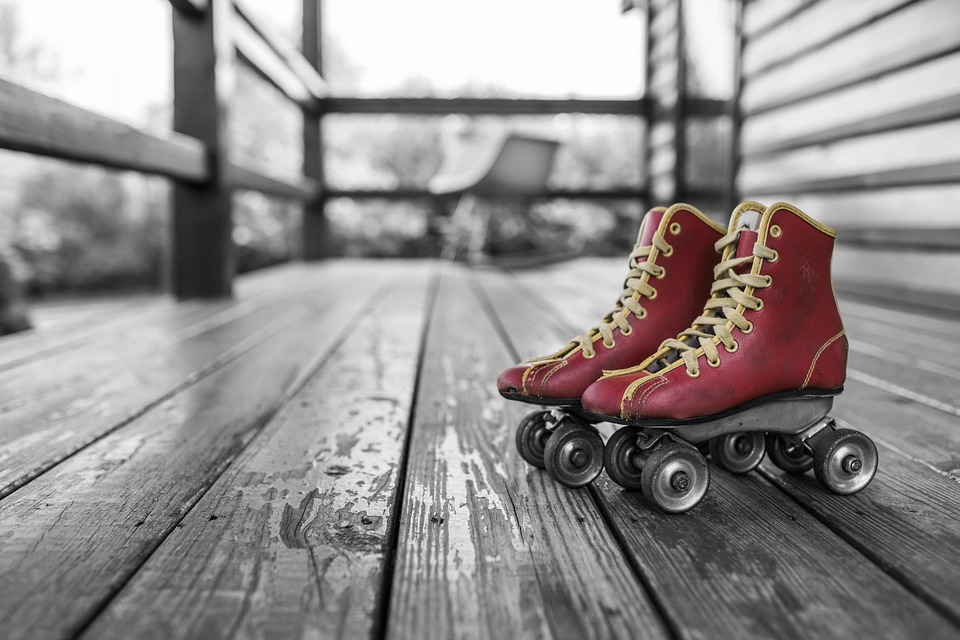The most important single factor in learning to ice skate is to have a proper fitting skate. A large percentage of new skaters become discouraged by what they think or are told, are “weak ankles.” These skaters find themselves flopping all over, with their ankles almost on the ice and even though they try twice as hard, they become discouraged and give up trying t learn by saying, “Oh well, I guess I just have weak ankles.” In almost every case, the trouble is not in the ankles but with the fit of the skates.
The Right Skates

The skate must be the right size – not a size or two larger with heavy socks making up the difference. The proper fitting of the skate, in the ankle and at the ball of the foot, determines how much support the skate will give you. This is the most important thing to remember.
A good-fitting heeled boot will give you sufficient to withstand the strain placed upon your arch while skating.
The steel blade attached to the boot is curved from toe to heel; only the center section (the flattest part) actually comes in contact with the ice. This curving of the blade is called the radius of the blade. The blade itself is hollow-ground. This means that a shallow concave groove runs throughout its length, making two distinct cutting edges. These edges are the sides of the groove, called inside and outside edges and correspond to the outside and inside of your foot.
Selecting Skates

When selecting your new ice skates, you must naturally place the utmost importance on the fit. The quality of the skate is also of great importance. Be sure that the skate is of substantial quality; that there is life in the leather and that the skate will not “break down” after short usage.
Price is of importance to everyone – yet many times you would be better off spending a few dollars more to secure a quality skate that will have a high trade-in value. Many skates will bring only a fraction of their original cost. For example, sometimes skates costing $10-$14 might only be worth to 10 per cent of their original cost on a trade-in. Yet, very fine skates costing $ 20 might bring a trade-in value of 35-40 per cent, when outgrown. So, in reality, the more expensive skates only cost you a couple of dollars more in the long run than the less expensive ones. Be sure to inquire about the trade-in value of your skates, when you make a purchase.
The three main types of skates, available to the public, are figure skates, hockey skates and racing skates. The selection of the correct type is yours depending on what purpose you plan to use the skate for. Usually, the figure skate will give far greater support to the skater – and is generally recommended for beginning skaters. The greater support and blade radius makes it easier to do the various movements on the ice. However, all three types are used widely in recreational skating.
Lacing

The proper lacing of the boot is equally essential. The service an ice skate gives you depends on proper lacing, just as the service a new car provides you is dependent on proper driving. The lacing should be loose around the toe of the skate. You should be able to put your finger under the lace with ease – in other words, they are not pulled tight. On a figure skate, generally, the bottom three eyelets should be left loose. This proper lacing, at the bottom, prevents the problem of “cold toes” by allowing free circulation.





